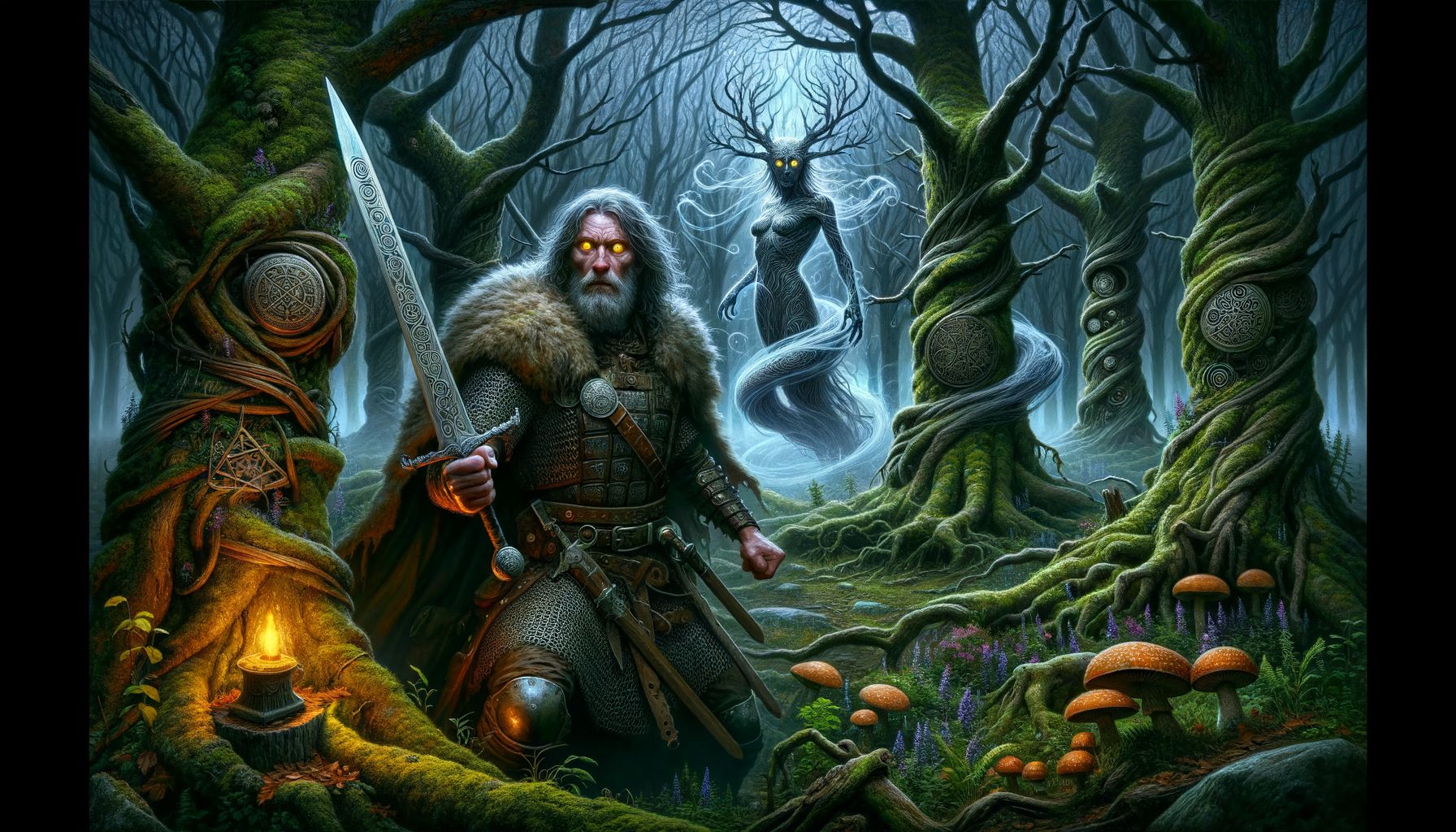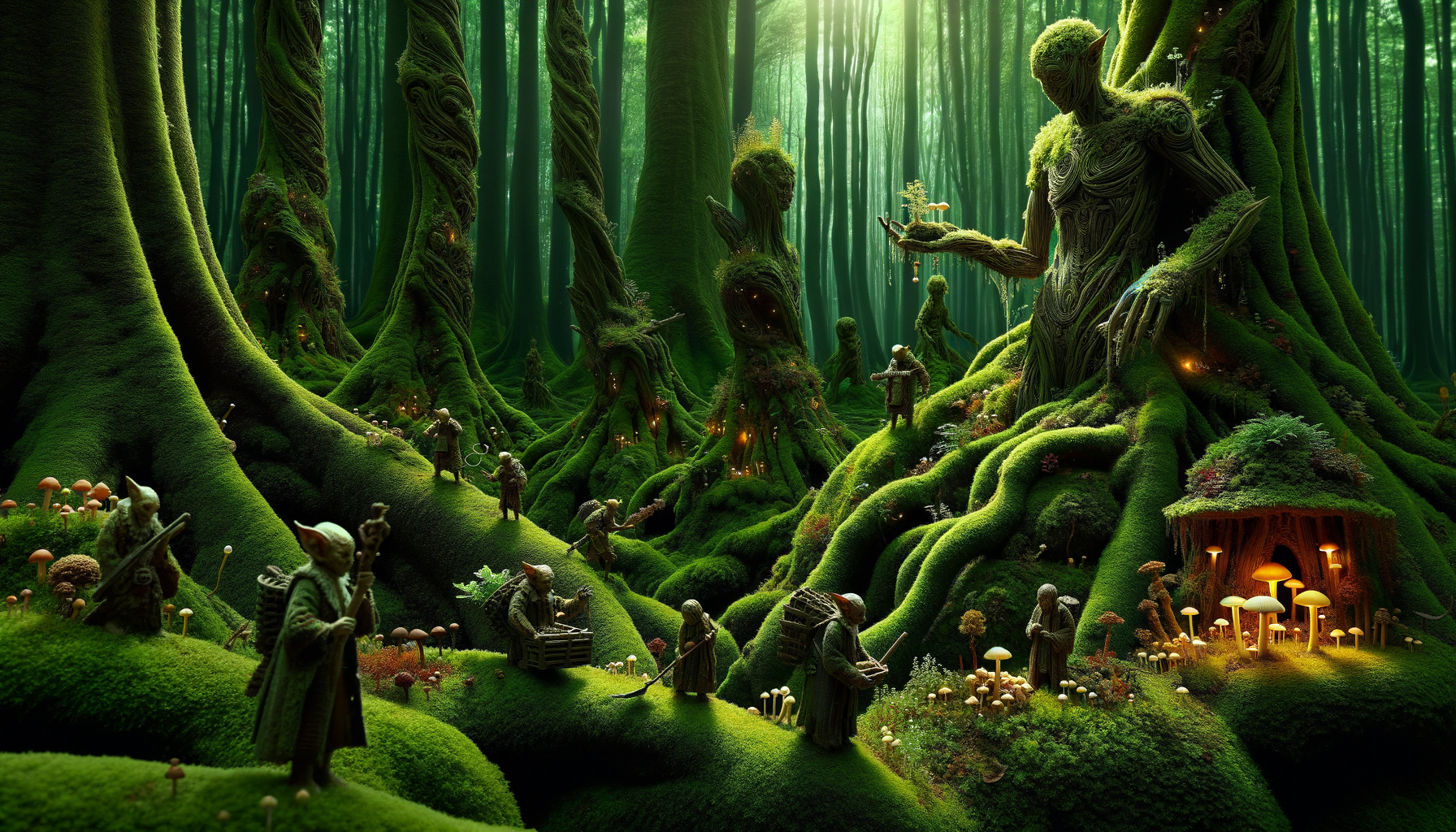Did you know that the captivating world of The Witcher is deeply rooted in Slavic folklore? The stories of Geralt of Rivia, a monster hunter with a storied past, draw heavily from ancient myths and legends of Eastern Europe. As fans of both the books by Andrzej Sapkowski and the popular Netflix series, we are excited to explore these mystical connections! From terrifying creatures to enchanting tales, let’s embark on a journey to uncover how Slavic folklore breathes life into The Witcher’s universe.
The Rich Tapestry of Slavic Folklore
Origins of Slavic Mythology
Slavic mythology offers a fascinating glimpse into the beliefs and customs of the Slavic tribes. These tribes, spread across Eastern Europe, had a rich cultural heritage filled with unique myths and legends. Their mythology was deeply rooted in paganism, with rituals and ceremonies designed to honor the natural world and its many deities.
Ancient rituals were a cornerstone of Slavic spiritual life. These practices often involved offerings to nature spirits and gods, who were believed to control various aspects of the natural world. From the forests to the rivers, every element of nature was imbued with spiritual significance.
Key Themes and Motifs
One of the most prominent themes in Slavic folklore is the presence of nature spirits. These beings, such as the Leshy (forest spirit) and Rusalka (water nymph), played crucial roles in the myths. They were often seen as guardians of their respective domains, capable of both benevolence and malevolence.
Another recurring motif is the duality of good versus evil. This theme is evident in many Slavic myths, where heroes often face malevolent forces that threaten the balance of the world. The struggle between light and dark, order and chaos, is a central narrative thread that weaves through Slavic folklore.
Impact on Modern Culture
Slavic folklore has had a lasting impact on modern culture, influencing literature, films, and video games. Notable adaptations include books like “The Witcher” series by Andrzej Sapkowski and movies that draw on Slavic myths for their narratives. These stories often bring ancient legends to a contemporary audience, preserving the rich heritage of Slavic mythology.
Andrzej Sapkowski: The Creator of Geralt
Sapkowski’s Inspiration
Andrzej Sapkowski, the mastermind behind “The Witcher” series, drew heavily from Slavic folklore to create his enthralling universe. His early influences included classic literature and the Slavic myths he grew up with. This blend of old and new helped shape his unique storytelling style.
The Witcher Saga Overview
“The Witcher” saga, encompassing a series of books, follows the adventures of Geralt of Rivia, a monster hunter navigating a world filled with magical creatures and moral ambiguity. These books have been adapted into successful video games and a popular TV series, each capturing the essence of Sapkowski’s intricate world.
Characters Rooted in Myth
Many characters in “The Witcher” are inspired by Slavic folklore. Geralt himself embodies the archetypal hero, while creatures like the Leshy and Rusalka make appearances throughout the series. These characters play significant roles, adding depth and authenticity to the narrative.
Mythical Creatures of The Witcher
Common Slavic Mythological Beings
Slavic mythology is rich with unique creatures like the Leshy, Rusalka, and Kikimora. The Leshy is a forest guardian, often depicted as a tall, humanoid figure with bark-like skin. Rusalki are water nymphs, sometimes benevolent, sometimes vengeful, depending on the tale. Kikimora, on the other hand, are house spirits that can bring good fortune or mischief.
Integration into The Witcher Universe
In “The Witcher,” these creatures are brought to life with incredible detail. The Leshy becomes a formidable opponent in the game, while the Rusalka’s lore is explored in various quests. The Kikimora, too, makes a chilling appearance, staying true to its folklore origins.
Monster Hunting and Folklore
Geralt’s role as a Witcher involves slaying these mythical beasts, a task that requires knowledge of their weaknesses and lore. This aspect of the game highlights the deep connection between monster hunting and folklore, as players must understand the myths to succeed in their quests.
Enchanting Locations: Slavic Inspiration in The Witcher
Iconic Places in Slavic Folklore
Slavic folklore is filled with mystical forests, rivers, and ancient ruins. These legendary locations often serve as the settings for epic tales and mythical events. The enchanted forests are home to spirits, while ancient ruins echo with the memories of past civilizations.
The Witcher’s World
“The Witcher” series maps these fictional locations to real-world Slavic sites, creating a world that feels both familiar and fantastical. The significance of these locations is woven into the narrative, adding layers of history and myth to the story.
Cultural Artifacts and Symbols
Traditional objects like weapons, amulets, and signs also play a crucial role in “The Witcher.” These artifacts are often imbued with symbolic meaning, reflecting their importance in Slavic culture. Whether it’s a silver sword used to vanquish monsters or a protective amulet, these items add depth to the series’ rich lore.
Conclusion
As we peel back the layers of The Witcher’s universe, it’s fascinating to see how deeply embedded Slavic folklore is within its fabric. From legendary creatures to enchanting landscapes, every element of Geralt’s world is a tribute to the rich cultural heritage of Eastern Europe. Whether you’re a lifelong fan or new to the series, understanding these connections adds a whole new dimension to the epic saga. Dive into the mystical world of The Witcher and don’t miss the next enchantingly thrilling installment coming soon! Explore more, and who knows? You might just uncover your next favorite tale!


